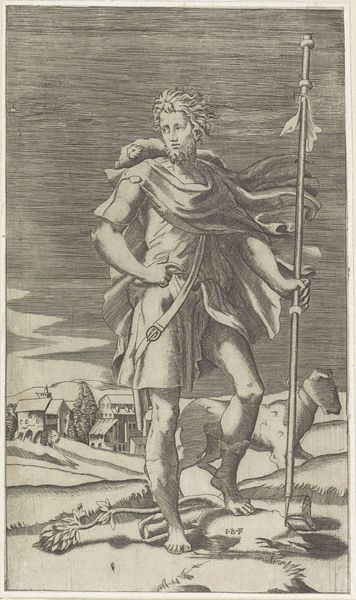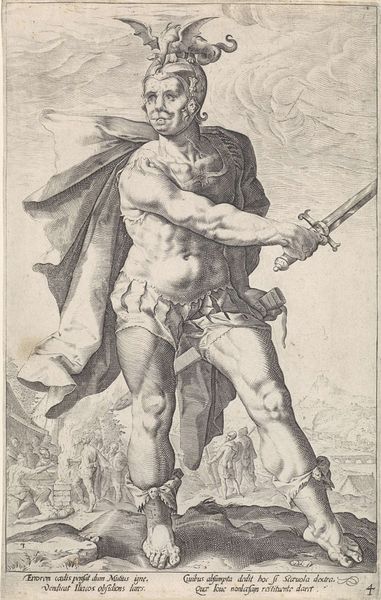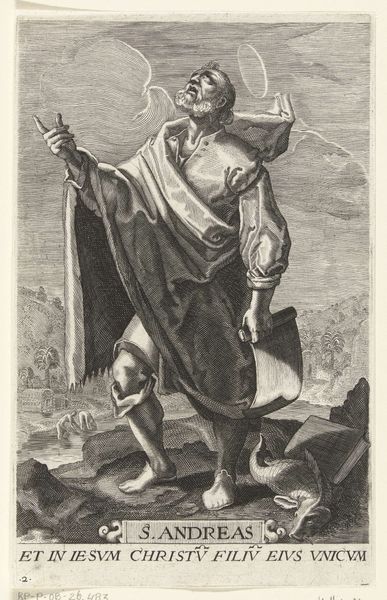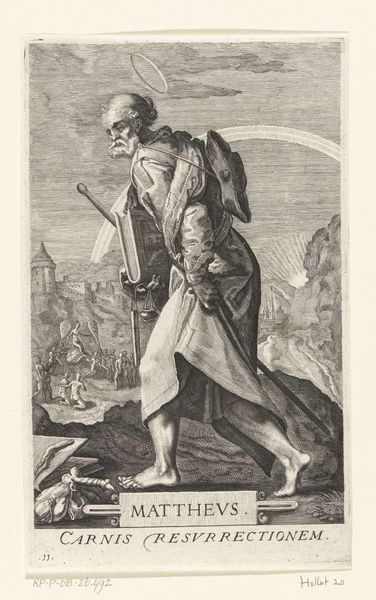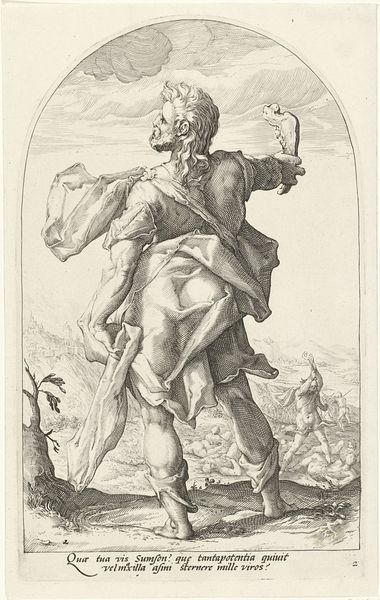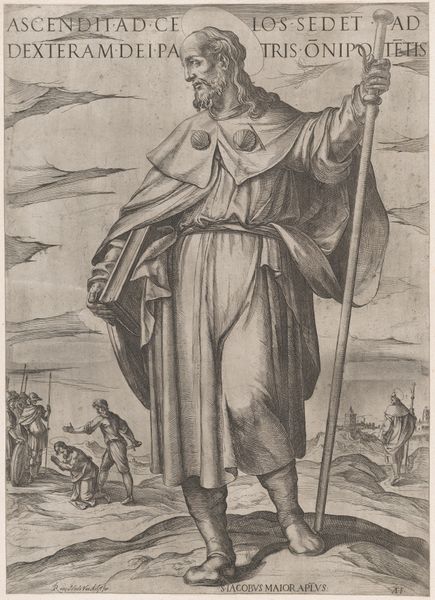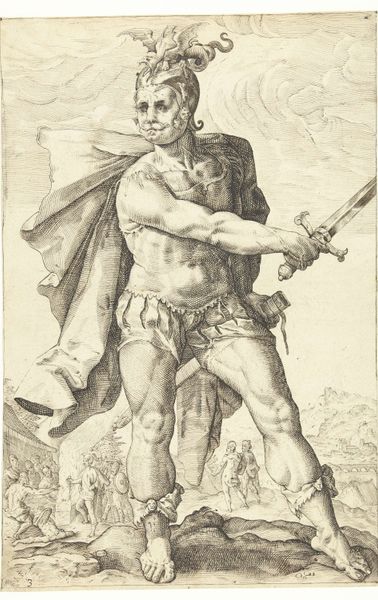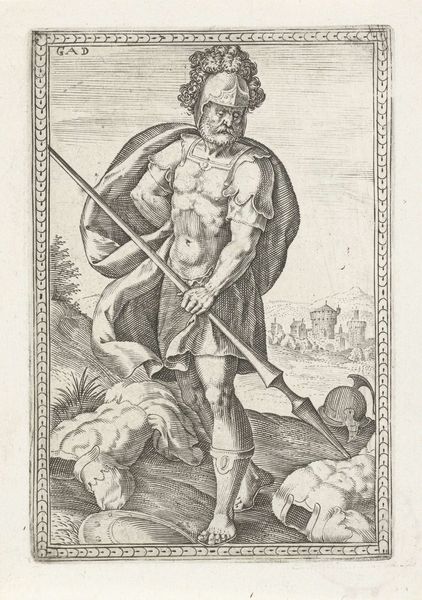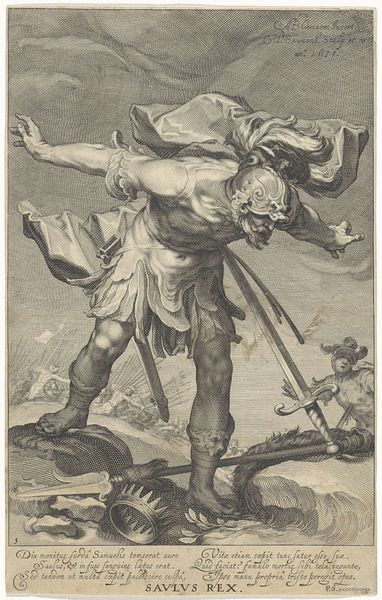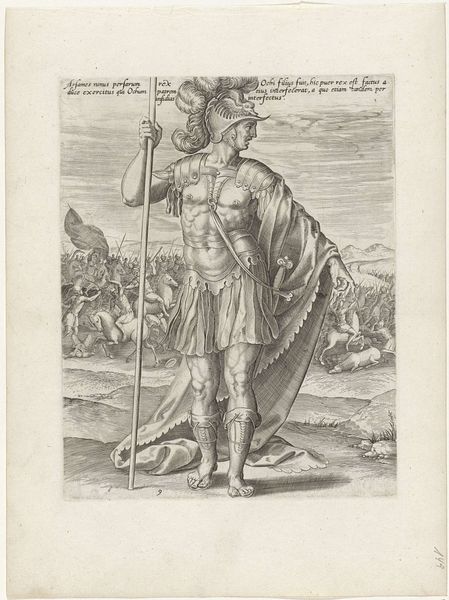
Dimensions: height 283 mm, width 198 mm
Copyright: Rijks Museum: Open Domain
This engraving of King Cambyses was made by an anonymous artist, and we can see it today in the Rijksmuseum in Amsterdam. Cambyses was an ancient Persian King, but this image wasn't made in Persia. It was made in Europe, probably in the 16th or 17th century, a period when European countries were expanding their reach around the world. So what's a Persian king doing in a European print? For one thing, he's been given armor much like that of a European soldier of the time. This is a European idea of kingship and empire, one rooted in classical antiquity. The Latin inscription below the image tells us that Cambyses was very unlike his father and met his end by his own sword. Prints like this one circulated widely and were used to teach lessons about history and morality. As historians of art, we can draw on a range of resources to understand the context of such an image, including prints, illustrated books, and other objects that help us to understand better the relationship between art, culture, and power.
Comments
No comments
Be the first to comment and join the conversation on the ultimate creative platform.
